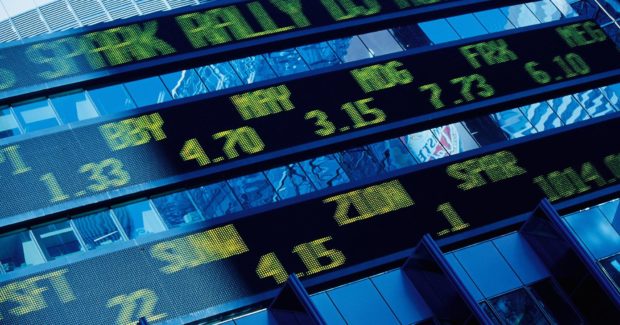Are 'Futures Markets' the Way Forward for Programmatic Media Trading?
by on 7th Jul 2015 in News

Using trading models originally designed to secure pricing guarantees for 18th-century agricultural traders, media futures trading is at the very vanguard of the ad tech revolution. ExchangeWire learns more about how futures trading is being lifted from more traditional commodities, such as orange juice and pork rinds, to the digital media space.
The basis of media futures trading is essentially where those on the buy- and sell-side of the media trading business bet on the price of inventory.
It works as follows, for example: media buyer and seller agree to sell 10,000 impressions on a gadgets website at a £5 CPM over an agreed time period (take 'Cyber Monday' in the run-up to Christmas, for example).
As the agreed time period approaches, and if the price of the inventory exceeds the pre-agreed price, the media buyer can sell the inventory on at a profit. Otherwise, the buyer can choose to use the inventory and insert ads there on behalf of a client.
Equally, if the price decreases, then the buyer also has the option to sell off the impressions in an attempt to cut their loss.
MediaGamma is currently conducting some pilot schemes with advertisers in the futures trading space having received funding from the UK government, plus some of the highest profile academic institutions in the world. ExchangeWire speaks with Rael Cline, CEO of UK-based futures outfit MediaGamma (pictured), to learn more.
 ExchangeWire: Can you explain the concept of a 'futures market', and how this might apply to the media landscape?
ExchangeWire: Can you explain the concept of a 'futures market', and how this might apply to the media landscape?
Rael Cline: Futures markets are a marketplace where buyers and sellers can agree on a fixed price and volume in advance for a point in the future. This is one of the longest standing ways of trading and has been around for nearly 2,000 years; but it was popularised in agricultural markets in the 1700s as a risk-management mechanism where sellers would have guaranteed future income and buyers would have guaranteed supply, and therefore could plan much better. Today, there are futures exchanges for things like oil, orange juice, currencies, and stocks.
In media, we already have the concept of buying in advance, with UpFronts for example. In programmatic media buying, 'in advance' means PMP’s and direct deals.
Simply put, we are expanding on this type of deal, but without the need to engage directly with the publishers on a deal-by-deal basis. Once we have this right, and our pilot is moving us toward that quickly, then we can move towards an exchange-based product people can trade, which will help scale these deals.
Given the proposition, how does it work? What are the commercial benefits to those who take part?
MediaGamma's proprietary algorithms establish digital media supply costs and inventory levels across a collection of sellers and continually adapt to establish the most accurate price for tomorrow, or an even longer time horizon. Currently, with programmatic, it's difficult to do this because not every exchange is transparent, meaning that everyone taking part is acting on hardly any information. So, you could say our first proposition is an examination of the seller inventory to establish a fair price.
Second, our technology delivers that deal so that the brand benefits from a predictable and stable ROI. We are hoping the transparency and accuracy will help agencies better satisfy clients and help publishers and SSP’s establish more certainty for future revenues.
How does this improve on the current media trading models? Which part of the media-buying landscape (i.e. buy, or sell) do you see as benefiting most if this model were to be adopted over currently orthodox methods of trading media?
This may surprise you, but we think we can bring a benefit to arbitrage. Arbitrage currently has a bad name as it is done in an opaque manner. Right now, very often it’s difficult to even decouple media prices from technology costs.
However, done transparently, arbitrage ensures that the value accrued by each party is a fair reflection of the risk each takes on. Greater visibility of how much it costs to buy media that reaches a segment of consumers, for example, will benefit both buyers and sellers in the model. Better information for everyone will yield better working relationships and better business outcomes on both the buy and sell side.
Before we get there, we need to get the analysis right to ensure what we are buying is real. Programmatic currently is a bit like the horse meat issue with the food supply a while back. Our analysis allows some clean up of some of the inventory being bought, so we cut down on waste. Unfortunately, with some exchanges, like Google’s for example, it is impossible to get a view on what you are buying. We are simply asked to trust them. Why should we? We are hoping we can show brands and agencies a way to vote with their feet for businesses that continue to block transparency and that should assist in a better trading model, regardless of where we end up.
Also, how do you take into account things like audience quality, context, etc, when it comes to pricing?
It’s a very big part of the price. We're tagging inventory so we can see what happens, and factor that into the algorithms. Buyers and sellers on the platform will be able to easily view how certain audiences and certain placements (where context becomes a factor as you rightly note) so that it's much easier for a publisher to feature certain premium inventory and for a buyer to understand where the placements are exactly.
Does this model commoditise media? You mention in your press release that this employs models used in the financial markets (that are effectively sullied by bad memories of the financial scandal of a few years back). Does this association raise fears about commoditisation and bad practice? How can you ensure there are honest brokers in the market?
The way digital media is currently traded, particularly in the programmatic space, commoditises media. That's because all the placements, in many ways, are treated equally in the aggregate, as opposed to a more granular, model that allows publishers and brands to be more in control of what they're buying and selling.
Currently, a publisher may miss out on revenue because high-value placements are somewhat hidden in an aggregated bundle. A brand may also miss out on opportunities to reach consumers because their message is being distributed over too many – and often unknown – placements. While the news about practices within financial markets a few years back was definitely not great, financial modelling for futures markets worked pretty well in providing greater security to buyers and sellers since the first futures exchange was started for rice trading in Japan in the 1700s.
The bad practices were mostly constrained to very particular markets – general futures markets actually functioned quite well throughout history, so one needs to be careful about lumping together the 'financial markets' as a single entity. We seek to make information available to all so everyone is in a level playing field. So, just to be clear, the focus is not on the trading side with the sole aim of making a financial profit but rather on use cases very much driven by brands, agency, and publisher needs.
Additionally, how far ahead in 'the future' do you currently propose trading media? The reason I ask is that a little over 10 years ago, Facebook didn't even exist, and now it is some of the most valuable digital media inventory on the market.
We will enable transactions between buyers and sellers as far into the future as they see fit. That being said, it'll be hard to trade things that aren't known quantities, but given digital media's prevalence – like mobile video – it's fairly certain you could engage in a futures contract for five years from now, or beyond if you'd like. That's up to buyers and sellers and their appetite to engage in more speculative transactions with one another. It’s something with which we’re in continuous contact with our partners.
What role would MediaGamma take in such a trading environment, and how would it extract (indeed add) to the market?
At this stage, we’re essentially operating as an open ad network, or trading desk depending on your viewpoint. As we arrive at a tradable product, we will move to our ambition to become a platform where buyers and sellers can come together to trade media openly, in a way that benefits everyone. We’ll remain plugged into the existing programmatic ecosystem too as we view ourselves as complementary to the existing ecosystem.
You mention incorporating bigger volumes of data. What sources of data do you have currently available, for instance, are they publicly available data sets, etc?
We’re working with a large third-party data provider. As we run more transactions through the model, the algorithm will start to develop a data set valuing future inventory buys against audiences. Ideally, once we're beyond the pilot phase, we'll be in a position to decipher what data to make public and its use cases - perhaps something like the FTSE or NYSE, with prices for certain consumer segments, given placements (e.g. travel-specific on publisher x), etc.
There is also much debate about data targeting models (i.e. deterministic, probabilistic, etc) what does MediaGamma propose using?
For testing we are using deterministic models, as that is what our partner uses. That is not to say this approach is better, but it’s just too early to form a view on probabilistic models.
Your press material mentions receiving funding from UK government sources. What was the rationale for receiving this funding?
The UK is so supportive of innovation, as can be seen from Innovate UK grants which allow start-ups like ours to get started building market-changing businesses. It's wonderful to be able to get funding to launch a project in the early days, before you're ready to get funding from other sources (angels, investment funds, etc.). It serves multiple purposes: it’s a validation of our idea and it allows us to raise less private capital. This last point is very important as the very early life of a company is generally the point at which it gives away the most equity as it’s the riskiest phase of development.
Follow MediaGamma on Twitter here.
Automated GuaranteedDisplayExchangeMedia SpendPMPProgrammaticTargeting







Follow ExchangeWire